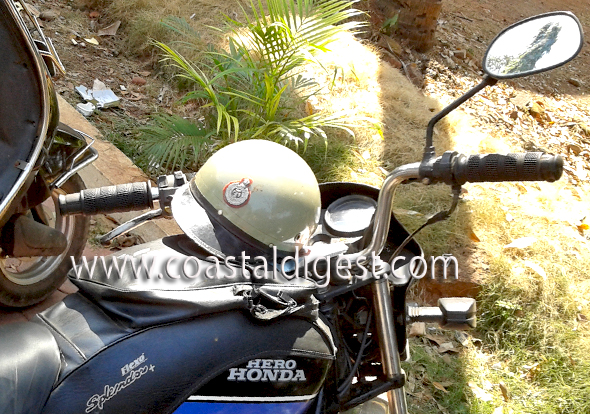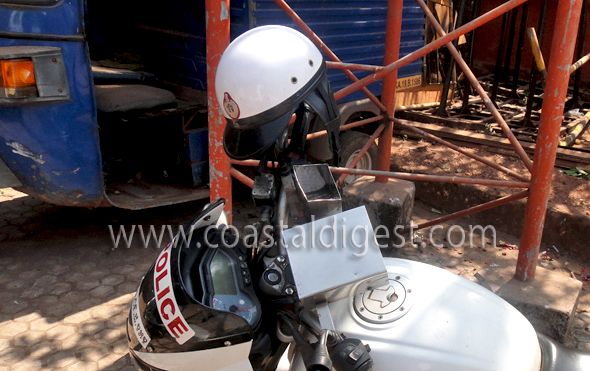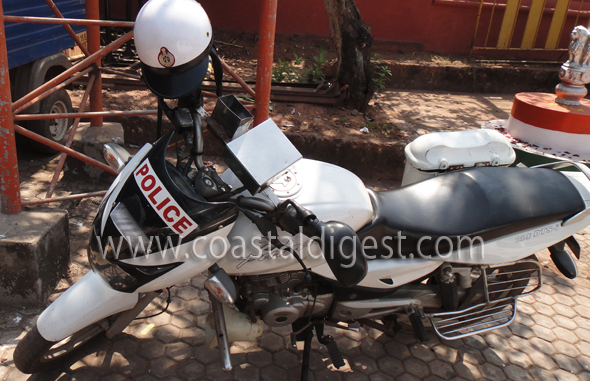
Mangalore: Scenes of traffic cops stopping two wheeler commuters on the streets of Mangalore asking them to take off their sub-standard helmets and penalizing them are on display more often than not these days.
About a week ago, traffic cops in the city went on a city-wide helmet seizing drive wherein they seized more than a hundred sub-standard helmets from two wheeler commuters which did not have the ISI mark. Some of those helmets were destroyed while others found their way into trash bins. The traffic police stated that it is concerned about the safety of riders as such helmets are not likely to prevent head injuries in case of accidents.
However, a look at helmets being used by policemen and traffic cops alike while commuting in their respective two wheelers, and one finds that they are no exception to the lot who are violating the prescribed norms and refusing to toe the line set by their own department. A good number of policemen in the city wear helmets of sub-standard quality but get away with the prestigious Karnataka State Police logo engraved on them.
Speaking to Coastaldigest.com, a traffic police official admitted that the helmets being worn by policemen do not possess ISI marks. “We want people to use only ISI mark helmets and proper ones at that. The helmets provided to police personnel as well as traffic police are also not up to the required standards. The material that helmets of policemen and traffic police cops are made of is the same. The only difference is that they (police) get the khaki coloured ones and we get the white ones. The order is that these helmets should not be used but there are a few who are still using them”, the traffic police official said.
“There is a directive that we should not be wearing these helmets but we are not provided with the helmets from the government. We have been told to buy new ones on our own”, says another traffic police cop.
“The (sub-standard) helmets that we were using were also supposed to be bought by us from the police shops in the city. We were not given these helmets for free. We had to pay Rs. 350 and get them. Even our uniforms are supposed to be bought by us. The government would pay Rs. 150 as tailoring charges but that would never be enough. The cost of our uniforms would come up to Rs.350-400. The Rs. 150 provided by the government goes directly to the tailor. We have to shell out the remaining money from our pockets”, he reveals.
When asked, ACP (Traffic) Subramanya said that he is “not aware” of policemen and traffic cops using sub-standard helmets while riding two wheelers. “We have directed all our personnel to wear proper helmets. If there is any complaint, it has to be brought to my notice”, says he.
The helmet seizing drive of traffic cops on the other hand has come as a merry making opportunity for helmet shops in the city as their sales are upwardly mobile.
“There has been an increase in sales. There are helmet thefts taking place too which have also contributed in sales growth. Occasions like the Panambur Beach Festival boost our sales. Almost every other time, our sales shoot up the very next day that the Panambur Beach Fest concludes as lots of helmets get stolen there”, says Noel Roach, Proprietor of a helmet shop in Balmatta.










Comments
Add new comment